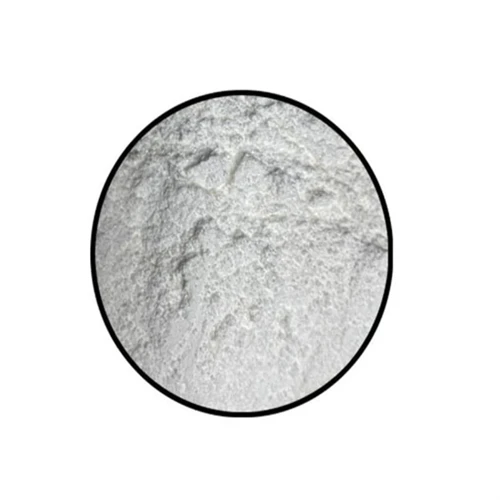Warning: Undefined array key "title" in /home/www/wwwroot/HTML/www.exportstart.com/wp-content/themes/1198/header.php on line 6
Warning: Undefined array key "file" in /home/www/wwwroot/HTML/www.exportstart.com/wp-content/themes/1198/header.php on line 7
Warning: Undefined array key "title" in /home/www/wwwroot/HTML/www.exportstart.com/wp-content/themes/1198/header.php on line 7
Warning: Undefined array key "title" in /home/www/wwwroot/HTML/www.exportstart.com/wp-content/themes/1198/header.php on line 7
- Afrikaans
- Albanian
- Amharic
- Arabic
- Armenian
- Azerbaijani
- Basque
- Belarusian
- Bengali
- Bosnian
- Bulgarian
- Catalan
- Cebuano
- China
- China (Taiwan)
- Corsican
- Croatian
- Czech
- Danish
- Dutch
- English
- Esperanto
- Estonian
- Finnish
- French
- Frisian
- Galician
- Georgian
- German
- Greek
- Gujarati
- Haitian Creole
- hausa
- hawaiian
- Hebrew
- Hindi
- Miao
- Hungarian
- Icelandic
- igbo
- Indonesian
- irish
- Italian
- Japanese
- Javanese
- Kannada
- kazakh
- Khmer
- Rwandese
- Korean
- Kurdish
- Kyrgyz
- Lao
- Latin
- Latvian
- Lithuanian
- Luxembourgish
- Macedonian
- Malgashi
- Malay
- Malayalam
- Maltese
- Maori
- Marathi
- Mongolian
- Myanmar
- Nepali
- Norwegian
- Norwegian
- Occitan
- Pashto
- Persian
- Polish
- Portuguese
- Punjabi
- Romanian
- Russian
- Samoan
- Scottish Gaelic
- Serbian
- Sesotho
- Shona
- Sindhi
- Sinhala
- Slovak
- Slovenian
- Somali
- Spanish
- Sundanese
- Swahili
- Swedish
- Tagalog
- Tajik
- Tamil
- Tatar
- Telugu
- Thai
- Turkish
- Turkmen
- Ukrainian
- Urdu
- Uighur
- Uzbek
- Vietnamese
- Welsh
- Bantu
- Yiddish
- Yoruba
- Zulu
अक्टूबर . 16, 2024 20:11 Back to list
Exploring the Properties and Applications of Propylene Glycol in Various Industries
Understanding Propylene Glycol A Comprehensive Overview
Propylene glycol, a synthetic organic compound with the chemical formula C3H8O2, is a clear, odorless, and slightly syrupy liquid that is hygroscopic and miscible with water, acetone, and chloroform. Its structure consists of a three-carbon chain with two hydroxyl groups (-OH), classifying it as a diol or glycol. This compound has gained significant attention due to its versatile applications across various industries, including food, pharmaceuticals, cosmetics, and industrial processes.
Chemical Properties and Production
Propylene glycol is produced through two primary methods hydration of propylene oxide and fermentation of renewable resources. The former involves the reaction of propylene oxide with water, resulting in propylene glycol, while the latter utilizes microbial processes to convert carbohydrates into glycol, offering a more sustainable option.
In terms of its chemical properties, propylene glycol exhibits low toxicity and is considered safe for consumption within regulated limits, making it a widely used additive in food products. Its low vapor pressure and high boiling point contribute to its stability and effectiveness as a solvent, preservative, and humectant.
Industrial Applications
In the food industry, propylene glycol serves various roles, including as a food preservative, flavoring agent, and moisture-retaining agent. The U.S. Food and Drug Administration (FDA) has approved its use in numerous food items, where it helps to maintain texture and prevent spoilage. Additionally, it is often found in processed foods, such as baked goods, dressings, and snacks, enhancing their shelf life and palatability.
The pharmaceutical sector also benefits significantly from propylene glycol. It is frequently used as an excipient in oral, injectable, and topical medications, where it aids in dissolving drugs and enhancing their absorption. Moreover, propylene glycol’s ability to stabilize emulsions makes it a common ingredient in creams and ointments.
propylene glycol pubchem

Cosmetics and personal care products exploit the hydrating characteristics of propylene glycol. Its presence in products like lotions, shampoos, and deodorants helps to maintain moisture levels, ensuring skin and hair stay hydrated. Additionally, it acts as a solvent for active ingredients, facilitating their efficacy.
Safety and Environmental Considerations
While propylene glycol is regarded as safe for use in food and cosmetics, concerns about its environmental impact and potential side effects have emerged. In high concentrations, it can possess a mild irritant potential for skin and eyes, and some individuals may experience allergic reactions. Therefore, proper handling and labeling are vital to ensure consumer safety.
From an environmental perspective, propylene glycol is biodegradable and poses minimal risk to aquatic life when released into the environment in typical concentrations. However, like all chemicals, it is essential to monitor its use and potential accumulation in ecosystems to avoid adverse effects.
Conclusion
Propylene glycol is a multifaceted compound with a broad range of applications across different industries. Its unique chemical properties and low toxicity make it a valuable ingredient in food, pharmaceuticals, and cosmetics. As consumer demands for safe and effective products continue to rise, propylene glycol’s role is likely to expand, especially as researchers seek to explore new sustainable production methods and applications.
Furthermore, the increasing emphasis on environmental sustainability will push for responsible use and development of propylene glycol and other similar compounds. Understanding its properties, applications, and safety considerations is essential for both consumers and industry professionals. By fostering informed choices and adherence to safety standards, the ongoing utilization of propylene glycol can continue to benefit various sectors while ensuring public health and environmental integrity.
Latest news
-
Certifications for Vegetarian and Xanthan Gum Vegetarian
NewsJun.17,2025
-
Sustainability Trends Reshaping the SLES N70 Market
NewsJun.17,2025
-
Propylene Glycol Use in Vaccines: Balancing Function and Perception
NewsJun.17,2025
-
Petroleum Jelly in Skincare: Balancing Benefits and Backlash
NewsJun.17,2025
-
Energy Price Volatility and Ripple Effect on Caprolactam Markets
NewsJun.17,2025
-
Spectroscopic Techniques for Adipic Acid Molecular Weight
NewsJun.17,2025

